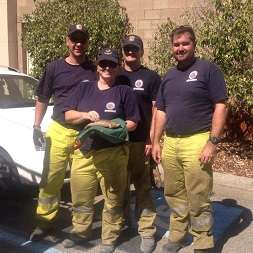Caring for animals at risk in bushfires

While many people have considered how to care for homes and people during bushfires, they haven't always decided on a plan of action to protect threatened domestic animals, livestock and wildlife, says the Murdoch University Pet Emergency Centre.
Senior Registrar (Small Animal Medicine), Dr Amanda Paul says it is good to discuss a plan with your family about how you will care for pets if a bushfire does eventuate.
"Evacuation centres generally don't take pets, so decide whether you are going to take them to a friend's place, kennel or veterinary hospital," Dr Paul said.
"If there is a fire, evacuate your pets as early as possible because once a fire has passed through an area it may be blocked and inaccessible for days and you don't want your pets without care, food or water for prolonged periods."
In preparation for a fire it is a good idea to assemble a basic pet evacuation kit so that you can leave in a hurry. Include in the kit your pet's vaccination records in case you are heading to a kennel, a few days' supply of food and water, pet bowls, medications, leads, blankets and any other personal belongings your pet will need.
Be aware that if your pet or an animal is injured in the fire and you try to help them, they might lash out in reaction to the pain and suffering they are feeling.
"Avoid getting injured yourself. It is not unusual for us to see owners that need to go to hospital themselves after an injured pet has bitten them," Dr Paul said.
If your pet is burnt during the fire it can be useful to flush small burns with cool water. Cool water can also help with large burns, but it's important to get pets suffering large burns to a veterinarian as quickly as possible.
Wrap open wounds in a towel to prevent contamination, reassure your pet while you do to minimise the chance of injury to yourself. Towels also make good slings if you need to transport an injured pet.
Injured wildlife are often just as much at risk of death from stress as they are from their injuries.
"If you find injured wildlife, place them in a quiet place or breathable bag to transport them to care. A hessian bag or a supermarket cloth bag is often ideal," Dr Paul said.
"Making the animal safe and protecting it from further harm while transporting it to a veterinarian or care facility may be the factor that saves its life.
"If the animal has open wounds or burns, use gloves to avoid further contamination of the wound and to protect yourself.
"Often wildlife may appear to be beyond saving, but it's surprising how they will respond to appropriate treatment and care. If they aren't able to be saved at least they can be humanely euthanased without further suffering."
Provided by Murdoch University
















